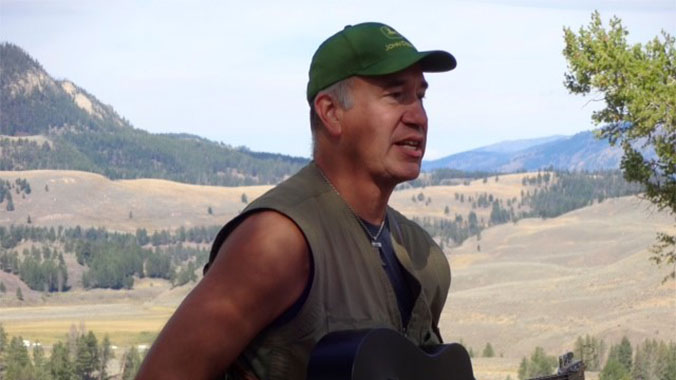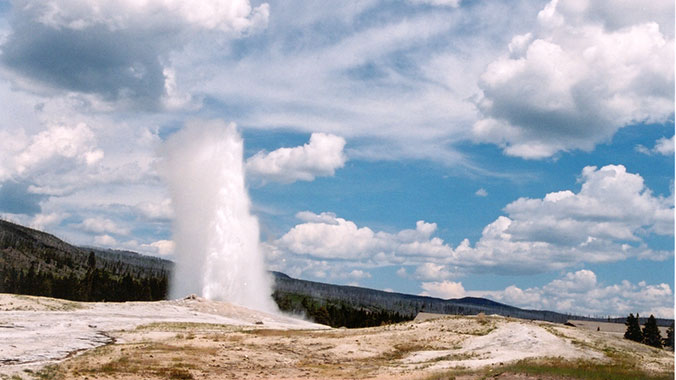Create An Account
Creating an account allows you to enroll in a program, reference your upcoming itinerary, and more.
Create an AccountYellowstone: The Great Caldera
Enroll with Confidence
We want your Road Scholar learning adventure to be something to look forward to—not worry about. Learn more
Protecting the Environment
We offset a portion of the emissions created by your travel. Learn more
After you enroll, we’ll ask you to provide or update your personal information and preferences, which includes your health information, lodging and meal preferences for your program.
Bring your Golden Age, Senior, or National Park pass for entry into Yellowstone National Park. If you enter Yellowstone National Park prior to the program start, you will need a park pass. You may purchase a pass at any National Park, U.S. Fish and Wildlife, Bureau of Land Management, or Forest Service site that charges an entrance or standard amenity fee. Those over 62 can get a Lifetime Senior Pass at these same sites. You may also obtain your pass by mail, for an additional fee. Please check the web site for more specific information http://www.nps.gov/fees_passes.htm (under Senior Pass, click on application form for the application). You may also purchase a Lifetime Senior, Annual, or 7 day pass when entering the park. Please see http://www.nps.gov/yell/planyourvisit/feesandreservations.htm for more details.
United States citizens don’t need a visa for any of the countries you’ll be visiting. Non-U.S. citizens should refer to their country's requirements to ensure they have the necessary documentation for travel.
If allergic to bee or insect stings, be sure to bring your bee sting kit as some destinations are isolated. Demands of high altitude travel are great. Program activities are moderately challenging. The elevation alone will increase the activity level before you engage in any physical activities. Each day you will enjoy moderate walking to explore some of Yellowstone’s many wonders. Should you have a history of altitude or respiratory difficulties, serious heart problems, or any medical conditions that might be exacerbated by the stresses of high elevations, take this into consideration before your trip. If you are unable to participate, or choose not to participate, you will miss important information and interpretation. In addition, falling behind during activities can put you at risk of possible wildlife encounters and/or winter exposure dangers. The academic components for this program are provided in the classroom, while traveling throughout the park during field days, and along the trails during outdoor activities.
Arrival day is on Monday, September 8, 2025.
Meet the group at Springhill Suites in Bozeman, Montana
Start of Trip: 3:00 p.m. hotel check-in; 4:00 p.m. Program Registration; 6:00 p.m. Welcome Dinner; 7:00 p.m. Orientation.
Your trip ends on: Saturday, September 13, 2025 in Bozeman, Montana at Springhill Suites
End of Trip: Program concludes on Day 6 following breakfast; 11:00 a.m. hotel check-out.
Bozeman Yellowstone International Airport (BZN)
The estimated travel time to the check-in location is 15 minutes .
The estimated distance to the check-in location is 8 miles .
Budget Rent a Car
Car Rentals
Phone: 4063884091
Cost: Please contact transfer service directly for rates. Prices subject to change.
*Advanced reservations are required.
Taxi and shuttle services from the Bozeman Airport to the program site can be expensive. It may be cheaper to rent a car.
Bozeman Montana
The estimated travel time to the check-in location is 15 minutes .
The estimated distance to the check-in location is 8 miles .
Uber/Lyft
Taxi
Cost: Please contact directly for reservations and rates. Prices subject to change.
Reservations and rates can be arranged through a smart phone app or by going online. All rates and charges are arranged independent of Road Scholar.
Bozeman Montana
The estimated travel time from the last location is 15 minutes .
The estimated distance to the last location is 8 miles .
Uber/Lyft
Taxi
Cost: Please contact directly for reservations and rates. Prices subject to change.
Reservations and rates can be arranged through a smart phone app or by going online. All rates and charges are arranged independent of Road Scholar.
Arrival day is on 9/8/2025.
Meet the group at Springhill Suites in Bozeman, Montana.
Start of Trip: 3:00 p.m. hotel check-in; 4:00 p.m. Program Registration; 6:00 p.m. Welcome Dinner; 7:00 p.m. Orientation.
Your trip ends on: Saturday, September 13, 2025 in Bozeman, Montana at Springhill Suites.
End of Trip: Program concludes on Day 6 following breakfast; 11:00 a.m. hotel check-out..
On-site parking for the duration of the program is available at the SpringHill Suites for $12 per day.
From the East (Billings, MT) To Bozeman (Springhill Suites)
If coming from the east on I-90 take exit 306 for N. 7th Avenue. Turn left onto N 7the Avenue. Continue on North 7th for .3 miles. Turn right on to Baxter Lane. Springhill Suites will be on the right in .8 miles.
From the West (Butte MT) to Bozeman (Springhill Suites)
Heading East on I-90 take exit 305 for N 19th Ave. Turn right on N 19th Ave for .9 miles. Turn left on Baxter Lane and Springhill Suites will be on the left in .3 miles.
From the South (Big Sky, MT) to Bozeman (Springhill Suites)
From US-191 Continue straight at the stop light onto MT-85/ Jackrabbit Ln for 2 miles. Turn right onto E Baxter lane for 1.9 miles. At the traffic circle take the second exit onto Baxter Lane. Springhill Suites will be on the left in 1.7 miles.




